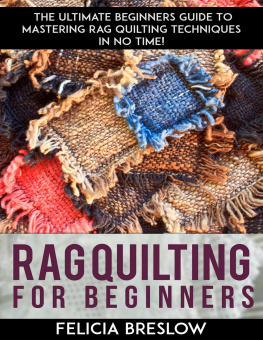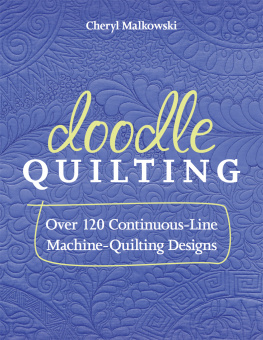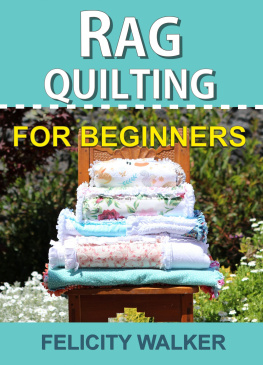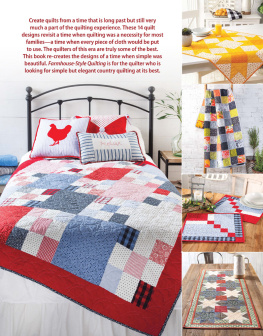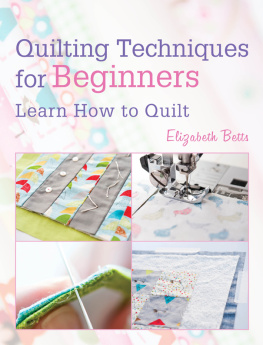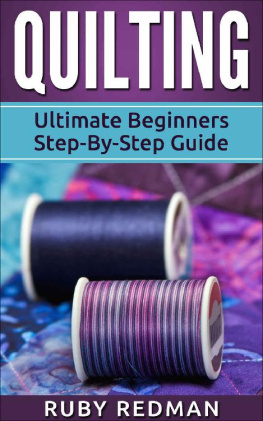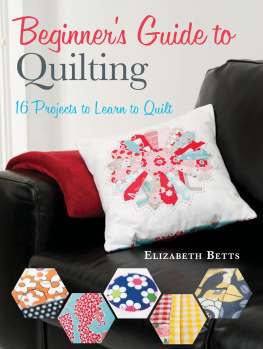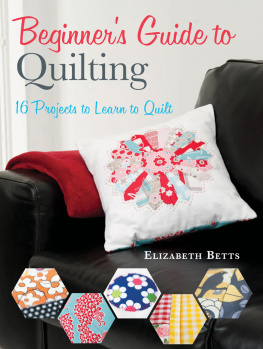Rag Quilting For Beginners
The Ultimate Beginners Guide To Mastering Rag Quilting Techniques In No Time!
Felicia Breslow
Copyright 2017. All rights reserved. No part of this publication may be reproduced, stored in a retrieval system or transmitted in any form or by any means, electronic, mechanical, photocopying, recording or otherwise, without prior permission of the publisher.
Limit of Liability / Disclaimer of Warranty: The publisher and author make no representations or warranties with respect or the accuracy or completeness of these contents and disclaim all warranties such as warranties of fitness of a particular purpose. The author or publisher are not liable for any damages whatsoever. The fact that an individual or organization is referred to in this document as a citation or source of information does not imply that the author or publisher endorses the information that the individual or organization provided.
The information herein is offered for informational purposes only. The presentation of the information is without contract or any type of guarantee assurance. The trademarks that are used are without consent, and the publication of the trademark is without permission or backing by the trademark holder. All trademarks and brands within this book are for clarifying purposes only and are owned by the owners themselves and are not affiliated with this document.
Claim Your Free Gift Now
As a way of saying thank you for your purchase, were offering you a free special bonus thats exclusive for our book readers.
SECRET DELETED CHAPTER BONUS

Its a secret chapter that was cut out from the book for various reasons. (some were not appropriate, some were too powerful, too taboo, etc) but yours free!
Go to the link below before it expires!
http://www.easysummaries.com/secretbonus
Rag Quilting For Beginners
The Ultimate Beginners Guide To Mastering Rag Quilting Techniques In No Time!
Table of Contents
Rag Quilting Section 1:
What is Rag Quilting?
Dear reader, it delights us to know that, of all available guides and books you decided to pick this one. We are hopeful to meet your positive expectations by the time you come to the end of reading.
Choosing to read this guide implies your curiosity to acquaint yourself with rag quilting in more depth, and your interest in acquiring its skills shortly and smoothly. Therefore, we are to introduce to you this beautiful category of art in a way that would broaden your knowledge enough to elevate your confidence and motives towards getting yourself started and further improving your skills.

First, we would define rag quilting in a few lines. It is interesting to point out that this term is not literally elaborated. In other words, you do not stuff the quilt with rags yet you sew them in a way that exposes them externally. Furthermore, quilting in this case differs from how it is typically done, and it is known to be sewn up quicker than in regular quilts, making it a more preferred alternative.
If you take a look on the above image, you would notice a number of created blocks. Each block consists of three layers known as the top layer, batting and backing layers. These three layers are altogether sandwiched and quilted, and when all the blocks are quilted, they are all sewn together to create the finalized quilt. Afterwards, the exposed edges are snipped, followed by washing the quilt so as for it to fray in the fancied fashion.
This definition may still appear unfamiliar to you and not easy to comprehend, which we assure you is absolutely normal. It is certain that theories become simpler and less complex when implemented and put into practice, and hence when you get to know the practical methods of this artistic technique, your confusions which probably arose with this definition will be rendered clear.
Rag Quilting Section 2:
Basic Tools and Supplies
The following are necessary to be available before starting the quilting activity. The functions of each tools are to be explained further in the upcoming sections.
1) Small scissors: It is needed for cutting threads
2) Spring type scissors: It is needed to cut the pieces of fabrics which you will use to do the quilting.
3) Seam Ripper
4) Ruler:Preferably with grids.
5) Fabric Marker (washable)
6) A Potato peeler with a brush: Used to brush the quilt after clipping.
7) Rotary mat and cutter
8) Fabric Clips: Can be dispensable, but more convenient if available.
9) Fabric of choice: Appropriate fabrics to be used in quilting are to be mentioned next.
10) Sewing machine
11) Sewing needle: Needles of size 14 are recommended as they are compatible with the thickness of the fabrics which will be sewn.
Check the following pictures of the required tools:
Spring scissors:

Seam ripper:

Quilting ruler, rotary mat and cutters:

Fabrics used in quilting:
You should bear in mind that not all fabrics can be properly utilized in quilting. You need specific materials which are prone to fray after being washed and also maintained in an acceptable quality after repeated vigorous washings.
The following fabrics are recommended and common in quilting:
- The quilters weight cotton is known to be a high quality 100% cotton fabric. It is the ideal and most convenient for quilting, and in fact deemed for the typical quilting fabric.
It is advised to wash and dry the fabric before including it in the cutting, quilting and sewing processes in order to prevent any unwanted shrinkages or fitting conflicts after completion of work.
The peculiarities of this category of cotton is that, its shrinkage rate is low in comparison with that of other cotton fabrics. In simpler words, the quilters cotton shrinks less than other lower-quality and cheaper cotton fabrics. Another peculiarity includes the low likeliness of the fabric to bleed, however, it is still advisable to put all fabrics into color fastness testing to confirm their eligibility for being utilized in quilting.

- The home dcor weight cotton is known to be a heavier cotton fabric than the previously mentioned. It often has sateen ends and is considered suitable for quilted home dcor. It is usually the fabric of preference for bag and pillow quilts. Besides, it is usually available in the widths of 54, making it convenient for home dcor quilting projects that entail large area. The fact of its heavy weight necessitates using a light batting in addition when used in quilting. Check the following image of pillow quilting.

Next page
